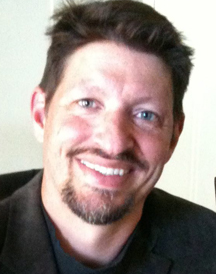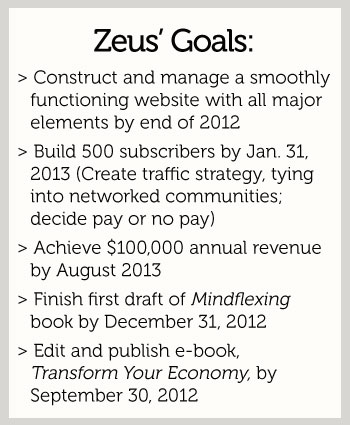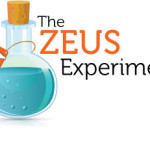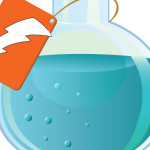A guest post by Zeus Yiamouyiannis.
Welcome to the first installment in the Zeus Experiment. Be sure to bookmark the series page so you don’t miss any of the episodes.
Schools fool you. Business development courses pull the wool over your eyes.
“Come in,” they say, “Learn, do these steps, pass these classes and you’re all set to succeed.
Mountaintop, here you come.”
“Pop!” (That was the sound of my bubble bursting.)
Building an online business is more like building a plane while flying. (That’s what I’m finding out as this experiment progresses!) In our first sessions, Tea’s helped me to crystalize my offer, develop specific goals, and come to terms with my resistance, my fears and frustrations.
It’s been an eye-opener, a mind opener, a heart opener, and a get-off-the-seat-of-your-pants opener.
The first learning stages seem to involve…
- Finding out who you are at 30,000 feet, and somehow making that the core of what you offer;
- Having a basic flight plan with destination goals; and
- Jettisoning self-defeating baggage, and reinforcing the wings of your plane, so you can fly lighter and stronger.
The steps feel more like 1-4- (oops)-2-3-5. The plan keeps taking shape and rearranging itself. “Keep at it. Learn. Reflect. Make changes. Find the good-enough solution. Move.” With movement, there is lift. My big challenges are to form and commit specific, measurable goals and find a way to glide gracefully over the small trip-ups. I try to chill out for a short while whenever I get stuck and flustered and take whatever mental laxative works: laughter, meditation, internet research, customer support, talking to a friend, shooting Tea an email. Then it’s time to re-focus and get back to work. Rome wasn’t built in a day, but it was built eventually, and it was magnificent.
Who is the pilot?
 At 30,000 feet (using the first module in Tea’s Find Your Secret Sauce course) I find out I’m a big picture thinker, a connector, and advocate for the underdog. I’m good at bringing together and simplifying random bits of information to help others “get” a complex issue. I’m a designer and creator of teaching methods and can customize almost any learning experience so that my clients achieve maximum success.
At 30,000 feet (using the first module in Tea’s Find Your Secret Sauce course) I find out I’m a big picture thinker, a connector, and advocate for the underdog. I’m good at bringing together and simplifying random bits of information to help others “get” a complex issue. I’m a designer and creator of teaching methods and can customize almost any learning experience so that my clients achieve maximum success.
My Vision: A planet of active, collaborating citizens continuously learning from each other how to best solve our most pressing, comprehensive problems. Communities of joy, where unleashed, connected talent provides a rich and unlimited source for high-quality, fulfilled living.
My mission: To help people embrace learning from an effective and authentic place in themselves so they can successfully engage their challenges and opportunities, and achieve their dreams.
Who is this Guy? I grew up the second of six children on an organic farm in central Ohio. It was an unconventional family by the Midwest’s more conformist standards.
We milked our own cows by hand, picked apples, ground our own wheat and made most of our own food. (I got used to standing out at an early age.) This helped develop a foundation of hard work, persistence, analysis, and creative problem-solving. (You’d be surprised how effectively you can mend holes in fences with bailing wire and old two-by-fours.)
Nature was my sanctuary, romping through the pond, ravine, forests, and meadows of a 35 acre farm. The core of my education occurred there — observing and communing with the woods. It’s where I learned how things are connected: the rain, the soil, the trees, the sun, the animals, and me.
My dad was the entrepreneur in the family. He left a biochemistry job at a big corporation to found his own consumer health non-profit. He wrote, self-published, and sold 35,000 copies of a book called Fluoride: The Aging Factor.
My dad regularly spoke at health conventions, sometimes successfully soliciting individual donations of up to $10,000 from audience members. He even bought one of the first personal computers from Radio Shack to help in his business.
While I was exposed to all of this, I wasn’t really taught any of it. My dad kept the knowledge of how to get all this done to himself.
I’ve never had a fear of public speaking, but I never learned to network, collaborate, build a business, or understand the ins-and-outs of technology. Consequently, I’m not intimidated by starting my own business or developing websites, but I lack the “how-to” knowledge. I’m a big-picture thinker who can master details once I see where they fit. Throw a bunch of random classes, videos, and steps at me, though and I flounder.
Where am I going?
This is a tough one. I don’t know about you, but I find actionable tasks and more specific measurable goals somewhat intimidating because they seem so deceptively simple. They take a lot of effort to achieve. They require grounding, hard work, thought, and commitment to some higher aim without really knowing where you’re going, nor how ready you are to get there. 
If someone asked you before you even looked at a map, “Where are you hiking and how far?” you’d likely say, “I don’t really know. I’ve never done this hike (ahem, online business) before. I don’t know the terrain. I don’t really know my level of fitness. I guess I’ll find out!”
That’s why it’s good to have a mentor. I have broad goals, but what about specific measurable ones?
Yes, by all means dream big, but what are some realistic expectations, especially in the shorter term for an online business?
Tea and I in conversation decided maybe 500 email subscribers by January of 2012 was a reasonable measurable goal (not my original number: 10,000 by August of next year), and that $100,000 dollar/year income was doable by the end of next year, given my set of skills (not $200,000).
Goals should challenge you, but they should be achievable.
What’s getting in my way?
Because I’m a big-picture thinker (and perhaps a bit of a closet control freak), it’s the small things that trip me up.
I fear some little technical flaw on my website will screw everything up, and it dampens my motivation to continue.
I get frustrated at some lack of logical consistency in how WordPress works (even if it is a generally sound platform), or how comments are moderated, or which of my email addresses to use.
However, I am quite comfortable with social media, writing, even marketing, if it is something I believe in.
I’m beginning to understand that the trick to removing barriers is to allow myself to channel my inner tech geek, and mix it with my external marketing sales sense. Internally, I’m motivated big time.
Now, that motivation has to mix with external action. Idealism must be balanced with pragmatism.
This isn’t easy. Most people lean pretty heavily to one side or the other. To be successful as an online entrepreneur, I’m finding out you have to learn to be both.
What I need to work on first
Tea and I developed a list of some of the essential elements for my basic website. It needs its own domain name, a host, and a platform (WordPress). For me these have been secured via GoDaddy, HostGator, and Word Press respectively.
It also needs…
- At least four pages: a blog, an “about” page, a “products and services” page, and a contact page
- Security and back-up systems (to be addressed by plugins)
- A way to understand site traffic and how my visitors find me (Google Analytics)
- An email subscriber service to develop your customer base (Aweber is what I used)
- A way to get paid (Paypal appears to be the easiest)
- Social share buttons and links to the website owner’s social media channels (more plugins)
- A way to moderate comments and eliminate SPAM (Tea recommended Disqus)
- It’s own branded email for contact (i.e. zeus@citizenzeus.com)
Much of the resources out there don’t really tell you all this. That’s why I’m making my mistakes now, and sharing them with you.
Here’s one: Using a free email, like citizenzeus@gmail.com isn’t recommended for your email subscription account. Aweber recommends strongly that you only use a branded email (zeus@citizenzeus.com). Now I have to get this configured before I can move forward.
(Tea uses Google for this and sent me here to get started.) Hopefully from my mistakes, and my and Tea’s attempt to bring the basics together, you’ll be able to follow along and build your own website and online business success.
****
A Word from the Chef
One of the things I’ve found after working with so many different clients is that the nitty-gritty details of implementation are often the ones that slow most folks down.
As Zeus pointed out, it’s hard to fly a plane and build it at the same time. When he came to me, he had already set up his hosting account with Hostgator and purchased the Genesis framework and (sort-of) installed it on his site at CitizenZeus.com. His previous blog is something he set up on blogspot (and may or may not be transferred over to the new site later — we’ll have to see if that content supports his current goals).
Zeus is a great guinea pig because he’s a lot like most start-ups: already on his journey but not sure how to get there. When folks come to me with questions about how to reach their business goals, we often need to step back and clarify a few things (as Zeus and I did):
- What are you selling?
- Who is your ideal client?
- And what makes you different from everyone else (doing that same thing)?
Then we need to decide on the outcomes (aka measurable goals) that we’re going to tackle together.
When I asked Zeus to tell me his goals, his first response was kind of vague: “Have a working website by the end of the year.” Since a “working website” means many things to many different people, we had to dig in and get specific about what that meant.
Mainly, so we’d both know when he’d achieved it. I also asked him to share some bigger (long-term goals) so that I’d be able to steer him in the right direction beyond the 6-month end point of our time together. That’s why he’s now got a Vision and a Mission statement. Those two things tell us his big WHY (the vision) and his HOW or purpose for the business (the mission).
What you’re not seeing here (yet) are complete descriptions of his ideal client, his services and his branding. But stay tuned! That’ll be part of what we talk about next.
In the meantime, we’re working on some of the basics (as he outlined above). We took a tour of the WordPress dashboard so he could learn the difference between a page and a post, a plugin and a widget, and how to build a navigation menu. I also walked him through some of the basics of getting started at AWeber (fyi, they’ve got lots of great tutorial videos once you’re in that will walk you through most everything).
Zeus still (as of this writing) needs to get his AWeber account connected to the sign-up form on his website. Then we’ve got to get his site properly configured with all the necessary plugins and basic content. But after that, most of what we’ll do together will be about creating a strategy and implementing like crazy. I
f you’re with us so far, great! And if you’re feeling a little lost, have a question, or want to offer some advice, leave a comment for us below. We’re all ears! And just for fun, here’s an old commercial to make you laugh about building your plane in the air:








I totally get the concept of building a business being like building an airplane in the sky. That’s what I’ve been doing the last year of my life. I started out pretty vague and have been moving forward and figuring things out while flying by the seat of my pants. Good luck, Zeus, with your blog and thanks, Tea, for this interesting project.
Not advice, just encouragement and a whole heap of gratitude. I find all this VERY helpful because it’s a yardstick to measure myself by. I relate to most of what you’re experiencing, Zeus. Most interesting for me is finding a balance between idealism (I’m going to translate that to mean, high standards and stickler for details) and pragmatism (not waiting until everything is all lined up before implementing). That balance is indeed very illusive. I think I hear you say you tend to be more of an idealist, and that most people are too much on one extreme. I tend to swing from one extreme to the next depending on what last frustrated me.Keep up the great work. I’m following CLOSELY!